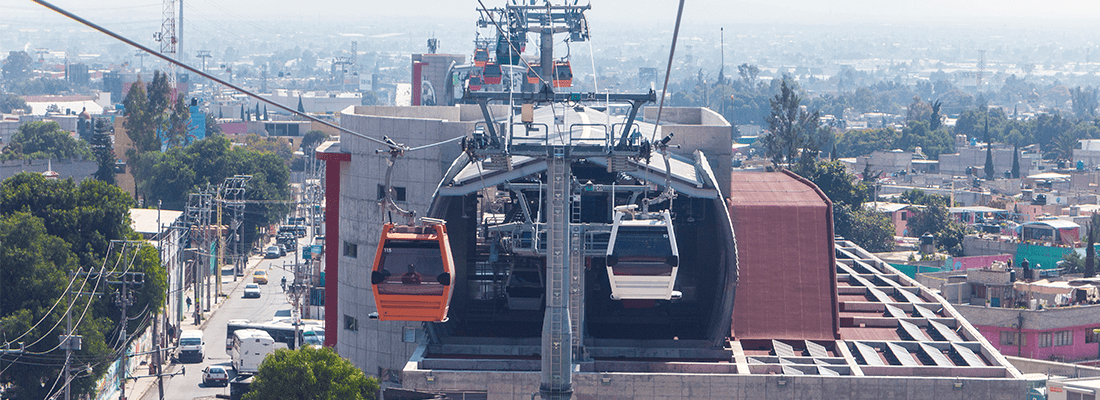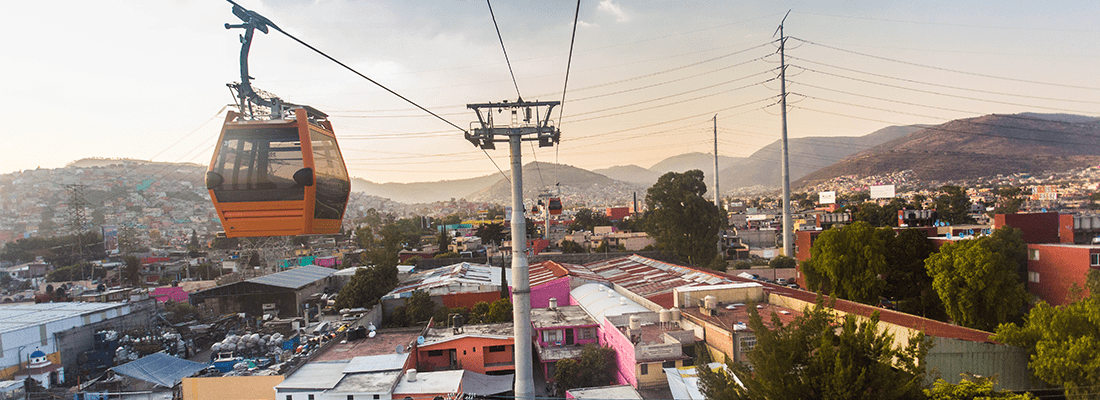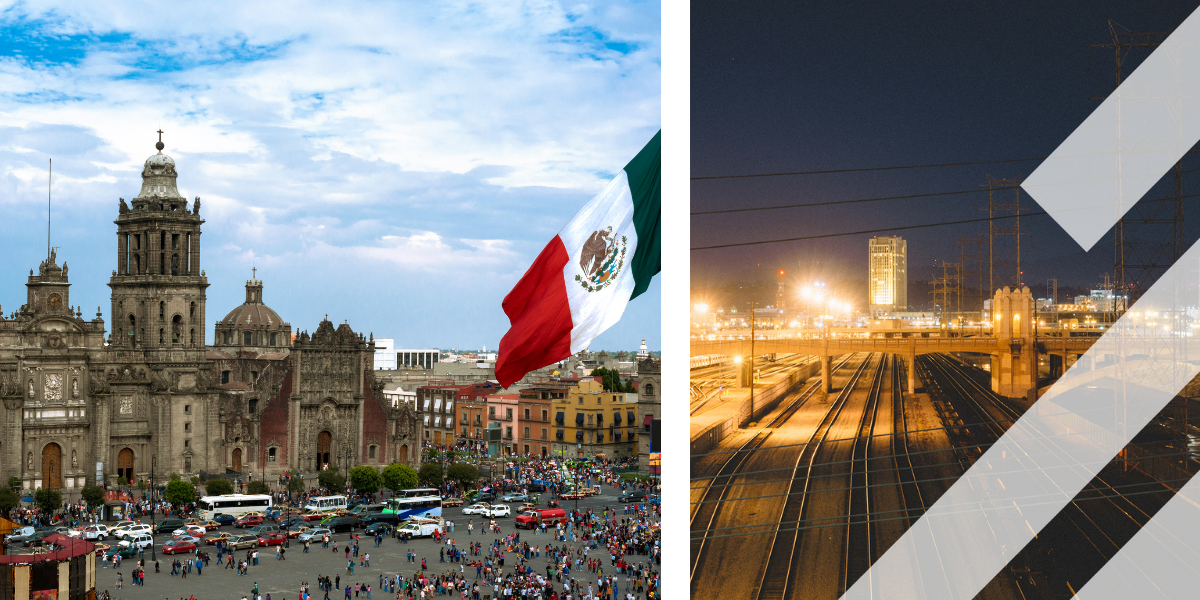SPEEDING UP THE MOBILITY TRANSITION: Victor Jasso, Mexicable
With the continuous growth of the population and ongoing urbanization there are numerous mobility challenges. Sustainability, safety and societal impact are amongst our daily concerns. We need to speed up the mobility transition to keep up with the fast changing global dynamics, which requires inventive approaches and better solutions. In this series we share inspiring and innovative cases from all over the world. Victor Jasso, director of the Mexicable, shares what impact the cablecar has had so far in Mexico City and the suburban area. How did he speed up the mobility transition?
‘The idea for the Mexicable all started in 2012. The government did a lot of research in some suburb areas of Mexico City. In Ecatepec there had been a large rise in population. It became really crowded. Before that it was the longest non-populated part of the city. So there were no services like water supply or electricity let alone a good transportation system to serve around 2 million people that lived there.’

-‘Going from Ecatepec to the city by bus was very dangerous.’-
‘People had a lot of trouble getting in and out of the city. It took at least one hour through traffic jams and it was very dangerous. Not only were the buses going through winding roads, a lot of criminal activities took place during the bus rides. Students were dependent on minibuses or had to walk to school. For women and children it was too dangerous to travel.’
‘Something had to change. The government wanted to improve the connection between Ecatepec and Mexico City. But developing a busline or train station was almost impossible. There was not enough space in Ecatepec and it was situated up in the hills. A smart option that came to surface was a ropeway. One tower would only need a diameter of three meters to support the ropeway. After studying several cases in Venezuela, Brazil, Colombia, and Europe the government decided to build the first urban ropeway in Mexico and North America. Via a public tender the Italian company Leitner started the project.’
-‘I was very proud to be part of this big change.’-
‘I myself worked as an electromechanical engineer at the time and was asked to join the project of Mexicable in 2014 when the first stone was put in place. It was something totally new; this was going to be the first urban ropeway in the country. And a huge project: a ropeway of 185 cabins and almost 5 km long. I was really excited. This was going to be something very special. And I felt even more motivated when it started running in October 2016. As soon as the site was finished, I could see test rides and actually see the gondola’s working. I was very proud to be part of a big change. We were about to improve the quality of life. This is totally amazing.’

-‘The Mexicable transports around 20,000 people per day, mostly women and children.’-
‘And after three years we show good results. Since the opening in 2016 we moved 17.5 million people or around 20,000 per day. 13% are 65+ years old. 8% of the users go to secondary school. And a lot of women and children travel by Mexicable. They all experience a 40 minute reduction of time travel. Thanks to the Mexicable you arrive in the city in a safe and fast way. For a good price. The average monthly income for people from Ecatepec is € 400. The fee for a ticket is a lot lower than the bus: it costs 7 pesos (31 eurocents) instead of 12 pesos (54 eurocents). So more people are able to pay for their transfer to the city.’
-‘We employ 250 people, only local.’-
‘On top of that we increased the employment possibilities for people from the area within five blocks of the seven stations. We have 250 (only local) employees and a waiting list. These employees are so proud of their jobs which they are very keen to keep, that they bring the best service to each and every customer. Together with a great view, it feels like you are on a holiday, a special trip. But then urban instead of touristic. It gives so much energy to see that the community is so proud of the ropeway system that they themselves protect it and keep it safe and clean.’
‘Another benefit of the Mexicable is that it runs electric, which is better for the environment. The Mexican public transportation system still needs a lot of improvements. People travel by car which they can hardly park. Mexico City is the most polluted city in the world. I really hope that we can make large environmental improvements offering better alternatives such as better buslines, bike sharing systems or more electric options, such as the Mexicable.’
-‘Even people afraid of heights prefer the ropeway over a dangerous busride.’-
‘But the main added value of the Mexicable is safety. After almost 3 years of running, we never had any dangerous situations. People feel really safe. Around Ecatepec 20 bus robberies per day is average. Even people who are afraid of heights prefer to take the ropeway over the bus. The stations are high and offer a nice environment. So we are very happy to make people feel safe.’
‘Of course we did face some challenges. In the municipal area it was not possible to use helicopters, so we had to use special tools for the construction. We used a drone to install the rope. Still today we are facing challenges. In Southern American cities we saw the amount of people using the urban ropeways drop. The Mexicable has a good reputation. So our biggest challenge is to keep this up and keep informing people that using the ropeway has a lot to offer. It is safe, good for the environment and for the economy. Our target was 29,000 passengers per day; today we transfer 20,000 per day. However we see a growth of 2,8% per year. In order to hit that target, we need to keep connecting the ropeway to other systems. This is why we are very happy that at the end of the year a new Mexibus line will be finished, crossing and connecting the Mexicable. It will be one of the largest buslines in the world with 27 stations and a distance of 24.8 km between both terminals.’

-‘A ropeway has to become part of the entire urban transport system.’-
‘And this is why I think the Mexicable will continue to grow. When you want to build an urban ropeway system I think it is very important to keep in mind that it has to be part of an entire system. An urban ropeway system should not stand on its own. It has to be connected to other systems. It has much more to offer than just a transport system or a tourist ride. We keep exploring our possibilities. Since 2-3 months we have new services at the stations such as businesses, offices, ATMs. We can offer good water and electricity supplies. We run 18,5 hours daily. The first ride starts service at 4.30 am and it stops at 11 pm. We want to keep it that way and expand for the next 20 years.’
‘My future plan is to expand the Mexicable to other parts of the country. Problems in the cities keep growing. More people live in smaller areas and the cities are growing upwards. Roads were designed years ago and do not fit our current transport needs anymore. I want to have a bigger positive impact and help people to improve the quality of life. That is only possible if we do not just look at the infrastructure but further than that. We have to work together and be more efficient. Let’s see where we are in five years’ time. I look forward to expand our social impact. And maybe one day even Europe will make use of a ropeway system as an urban system, not only for tourists.’
Victor Jasso is the director of Mexicable.
Share your story
Do you have an innovation, research results or an other interesting topic you would like to share with the professionals in the infrastructure, traffic management, safety, smart mobility and parking industry? The Intertraffic website and social media channels are a great platform to showcase your stories!
Please contact our Sr Brand Marketing Manager Carola Jansen-Young.
Are you an Intertraffic exhibitor?
Make sure you add your latest press releases to your Company Profile in the Exhibitor Portal for free exposure.
Get up to speed on the mobility industry - our newsletter straight to your inbox!







